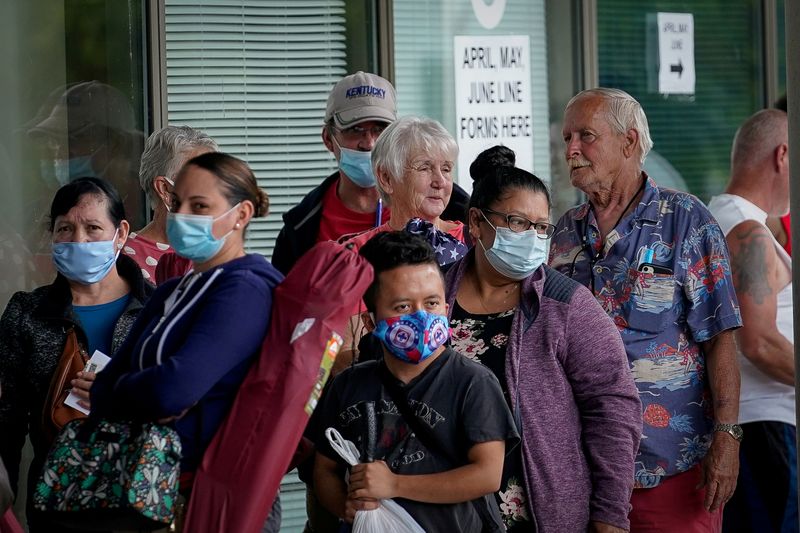By Lucia Mutikani
WASHINGTON (Reuters) - The number of Americans filing first-time claims for jobless benefits fell last week, but remained extraordinarily high amid widespread business restrictions to slow a rising tide of new COVID-19 infections and lack of additional fiscal stimulus.
Initial claims for state unemployment benefits totaled a seasonally adjusted 712,000 for the week ended Nov. 28, compared with 787,000 in the prior week, the Labor Department said on Thursday. Economists polled by Reuters had forecast 775,000 applications in the latest week.
A government watchdog on Monday said the claims data was inaccurate as the Labor Department was using traditional estimates, which were not appropriate given the economic shock caused by the coronavirus pandemic.
The Government Accountability Office said state backlogs in processing applications had led to people submitting claims for multiple weeks of retroactive benefits during single reporting periods, inflating the claims data. Unemployment claims hit a record 6.867 million in March and have been stuck above their 665,000 peak during the 2007-09 Great Recession
Despite the problems with the data, the recent increase in new applications for benefits mirrored a weakening in other labor market indicators, reflecting the impact of the COVID-19 resurgence and a largely depleted fiscal stimulus.
The United States is in the midst of a fresh wave of COVID-19 infections, with 4.2 million new cases and more than 35,000 coronavirus-related deaths reported in November, according to a Reuters tally of official data.
More than $3 trillion in government COVID-19 relief helped millions of unemployed Americans cover daily expenses and companies keep workers on payrolls, leading to record economic growth in the third quarter.
Republicans and Democrats in Congress remained unable to reach agreement on a fresh relief package on Wednesday, with top Republicans supporting what the Senate's top Democrats dismissed as an "inadequate, partisan proposal."
A survey from the Institute for Supply Management on Tuesday showed its measure of factory employment contracted in November after expanding in October for the first time since July 2019.
Manufacturers reported high rates of absenteeism and difficulties returning people to work and hiring staff due to COVID-19. On Wednesday, the ADP (NASDAQ:ADP) National Employment Report showed private payrolls rising below expectations in November.
The Federal Reserve's Beige Book report of anecdotal information on business activity collected from contacts across the nation, showed employment rising in all districts on or before Nov. 20, but the U.S. central bank noted "for most, the pace was slow, at best."
The reports support expectations that job growth slowed further in November. According to a Reuters survey of economists, the government's closely watched employment report on Friday is likely to show that farm payrolls increased by 486,000 jobs last month after rising 638,000 in October.
That would the smallest gain since the jobs recovery started in May and leave employment 9.609 million below its peak in February. Job growth peaked at a record 4.781 million in June.

The economy grew at a historic 33.1% annualized rate in the third quarter after shrinking at a 31.4% rate in the April-June period, the deepest since the government started keeping records in 1947. Growth estimates for the fourth quarter are mostly below 5%.